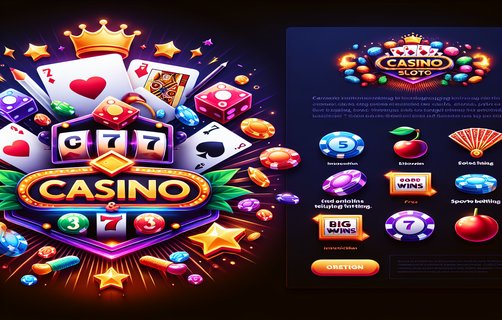Strategic Insights into Betting Dynamics: Analyzing Key Factors in the Modern Gaming Landscape
The evolution of the betting industry has ushered in a complex landscape where variables such as bet limits, gambling technology, and Casino affiliates play pivotal roles in shaping gambling strategies. In this analysis, we will explore these factors systematically, emphasizing how they interplay and influence both player decisions and casino profitability.
Bet Limits serve as the foundational element of any betting strategy, impacting not only how much a player can wager but also influencing betting psychology. Higher bet limits may attract more aggressive gamblers seeking substantial returns, while lower limits can cater to those pursuing a more conservative approach. Understanding these dynamics allows casinos to position themselves effectively, balancing the needs of varied clientele while maximizing their revenue margins.
Moreover, the introduction of Aristocrat gaming machines, renowned for their innovative features and engaging user experiences, has revolutionized the casino environment. These machines often incorporate additional elements that enhance player interaction, ultimately leading to increased playtime and higher overall revenue for establishments. The clever integration of technology into gaming augments not only user satisfaction but also loyalty, positively affecting the casino's bottom line.
The concept of enhanced reality features represents another frontier in gambling technology. By employing augmented reality (AR) and virtual reality (VR), casinos are creating immersive environments where players can engage in interactive betting experiences. This innovation opens new avenues for player participation and offers potential differentiation in an increasingly competitive market. Such technological advancements may also hijack attention from traditional forms of betting, necessitating a reevaluation of existing strategies by casino operators.
Among seasoned gamblers, isolating weak players has emerged as a tactical strategy to increase success rates. This analysis refers to the identification and targeting of less skilled opponents within games, allowing astute players to exploit weaknesses effectively. Implementing this strategy entails not only keen observation but also a deep understanding of opponent behaviors and betting patterns, providing a comprehensive edge in competitive gambling scenarios.
Furthermore, the concept of positive progression betting is gaining traction as a favored approach among players looking to manage their bankrolls strategically. This method entails increasing bets incrementally following wins, thereby allowing players to capitalize on streaks while preserving their initial capital. As this strategy spreads, casinos must adapt by revising their game offerings and considering how to maintain profitability amid fluctuating player behaviors.


In conclusion, the modern gambling landscape is shaped by a confluence of innovative features, psychological tactics, and technology-driven approaches. Each component—whether it be bet limits, advanced gaming machines, or strategic methodologies—plays a critical role in the overarching success of gaming operations. Consequently, a holistic understanding of these interconnected elements is essential for players seeking to refine their strategies and for casinos aiming to secure a competitive edge in the market.
